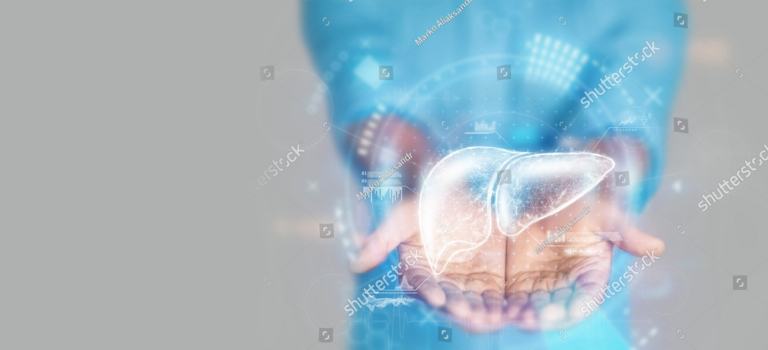Are you Urinating Frequently?

Have you found yourself urinating quite often? Obviously, frequent urination is NOT normal and that’s why we want you to know the main causes behind this so that you take immediate action. From frequent trips to the loo during the day to have the urge to urinate in the middle of the night — all this can be a sign that something is wrong with you. Excessive urination is not always a cause of drinking excessive water; it can happen for various reasons. How many times a day do you pee? Never really thought about it? Well, counting the number of times you pee might not seem important, but the number of times you pee in a day can reveal a lot about your health. To understand all about the normal frequency of urination, and the reasons behind frequent urination, we got in touch with Dr. Sarita Channawar, consultant obstetrician and gynecologist, Wockhardt Hospitals, Mira Road. What is the ‘Normal’ Urination Frequency in a Day? “Going around 4-10 times to urinate per day is normal and essential, ” says Dr. Channawar. The average amount, however, most people urinate, is four to seven times, during a day. But not going at all or just urinating once or twice a day is unhealthy and not recommended at all. In the same way, if you notice that all of a sudden, your toilet trips have increased, it is likely that you may have a frequency problem, which is also not normal. In fact, this condition can be related to several other medical conditions that need to be addressed. That’s why you should be aware of the number of times you urinate in a day. Here’s what Frequent Urination Can Indicate About your Health These are the underlying medical conditions that may be responsible for increased urinary frequency: 1. Certain medical conditions Dr. Channawar says if you’re going more often, it can be a symptom of many conditions like overactive bladder syndrome, bladder cancer, UTIs, or prostate problems, and can even disturb your sleep. 2. Urinary tract infection Having a urinary tract or bladder infection will also make you urinate frequently, says Dr. Channawar. A urinary tract infection (UTI) is an infection of the urinary system. The symptoms of this condition include painful urination, feeling pain in your side or lower back, and needing to urinate often. Most UTIs can be treated with an antibiotic. 3. Interstitial cystitis Interstitial cystitis (a painful bladder condition causing frequent urination) can be seen in people. The pain ranges from mild discomfort to severe pain. The condition is a part of a spectrum of diseases known as painful bladder syndrome. 4. Due to pregnancy Frequent urination is also seen during pregnancy, as the bladder gets squished. This is because the baby tends to take more space inside the body, says Dr. Channawar. 5. Kidney diseases “Frequent urination can indicate kidney disease, and it is problematic when accompanied by abdominal pain and fever causing a UTI, ” says Dr. Channawar. When frequent urination is accompanied by the symptoms of weakness or trouble sleeping, blood-stained urine, loss of appetite, and muscle cramps, you should visit a doctor. 6. Diabetes Most people know that peeing a lot is one of the early signs of diabetes. Dr. Channawar says, “It irritates the bladder, which then tends to contract even when it contains small amounts of urine, leading to frequent urination.” 7. Diuretics A diuretic is something that makes you urinate more frequently than normal. You’re probably familiar with common diuretics — alcohol like beer, wine, liquor, and caffeine (coffee or tea). In addition, some medications used to treat other conditions like high blood pressure can have diuretic side effects. Dr. Channawar says, “Opting for diuretics means medications to treat high blood pressure or fluid buildup work in the kidney, and the extra fluid is expelled out from the body. This can cause frequent urination.” Apart from these conditions, suffering from pelvic tumor, vaginitis, which is inflammation of the vagina, having a prolapse of the female pelvic organs through the vagina, can also make you urinate frequently. When is Frequent Urination a Problem? If you’re pretty sure that overhydration, too much caffeine, or pregnancy aren’t behind your frequent urination – or if your need to go is interfering with your daily life – it’s definitely the right time to schedule an appointment with your primary care doctor or your Ob-Gyn. You’ve seen that there are several things that can cause frequent urination. It’s important to speak to a doctor about your concerns and get an accurate diagnosis. Source: https://www.healthshots.com/intimate-health/feminine-hygiene/everything-you-need-to-know-about-vaginal-crohns-2/
What is the Nipah Virus? Causes, Symptoms & Treatment

Healthcare experts are concerned about the double blow that Kerala is facing. As the state continues to log high Covid-19 numbers, the Nipah virus claimed several lives and many others are under observation. Experts said it is time for Mumbai and Maharashtra, to be alert, especially during the festive season. Dr. Wiqar Shaikh, professor of Medicine, Grant Medical College and Sir J.J. Group of Hospitals said that the Nipah Virus (NiV) was first discovered in 1999 following an outbreak of the disease in pigs and human beings in Malaysia and Singapore, resulting in 300 human cases and more than 100 deaths. At least 1 million pigs were then killed to help control the outbreak. Since then, NiV outbreaks have been recorded annually in Bangladesh and India. The first case of NiV was detected in Siliguri in 2001 when 45 people died due to the outbreak. What is the Nipah Virus? Dr. Bipin Jibhkate, Consultant critical care medicine, and ICU director Wockhardt Hospitals say Nipah Virus is a zoonotic virus, which means that it spreads from animals to human beings. Fruit bats can spread NiV to pigs and then to human beings through pig saliva or urine. NiV could also be transferred to human beings through infected fruits. What are the Signs and Symptoms? Dr. Jibhkate says common symptoms include fever, headache, cough, sore throat, vomiting, and difficulty in breathing. Severe symptoms could be a stiff neck, sensitivity to light, confusion, and seizures. He also recommends a thorough check-up to avoid any overlaps with Covid-19 symptoms and seeking immediate consultation. Who Are at Risk? Being in close contacts with infected animals like bats, pigs or even infected humans can raise one’s risk of getting infected with the virus, says Dr. Jibhkate. He adds that people of any age group can get infected with the Nipah virus, especially, those who work in close proximity with animals like pigs. While there is no fixed rate of transmissibility of the virus, Dr. Jibhkate says people who come in contact with the body fluids (blood, urine, or saliva) of an infected patient could contract the virus. What is the Primary Course of Treatment? Unfortunately, there is no specific treatment for NiV and is limited to supportive care, symptomatic treatment, rest, and hydration, says Dr. Jibhkate. Dr. Shaikh says there may be long-term effects in survivors such as persistent fits and personality changes. Health authorities across India especially in Mumbai and Maharashtra should be alert due to the ongoing festive season, he added. “Need to be vigilant to prevent an outbreak of NiV in the country, city, and state as it would be disastrous, with Covid-19 already causing havoc.” “Nipah can also cause encephalitis. Approximately 20 percent of patients are reported to have neurological consequences such as seizure disorder and personality changes,” said Dr. Santosh Bansode, head of the department, Emergency Medicine, Wockhardt Hospitals, Mumbai Central. “There are currently no studies on viral persistence in bodily fluids or the environment including fruits. Human to human transmission of the Nipah virus is noted among family and caregivers of infected patients. The interval from infection to the onset of symptoms is believed to be from 4 to 14 days. However, the period of 45 days is also reported in some cases. The case fatality rate is 40 percent to 75 percent,” said Dr. Bansode.
Pain Disorder, Fibromyalgia, on the Rise in the Metropolis

MUMBAI: In the last few months as the city struggled with Covid’s second wave, doctors noticed an increase in the number of patients coming in with complaints of fibromyalgia, a painful condition not easy to diagnose or treat. “In the last two months, I have been getting six new patients with fibromyalgia every week,” said rheumatologist Dr. Dipti Patel from Wockhardt Hospitals near Mumbai Central railway station. While the virus itself may not be the trigger for fibromyalgia, the instability and emotional upheaval people suffered due to Covid could be the reason. Dr. Patel said while taking down the patient’s history, she found almost 40% of them had suffered from Covid three or four months before the fibromyalgia symptoms came up. “Most of them are young, more women than men, and work long hours from their homes,” she added. Fibromyalgia is a painful disorder characterized by non-specific pain, mostly in the shoulders, joints, elbows, chest, etc. Patients have trigger points that, when pressed, cause severe pain. Many patients with fibromyalgia also suffer from ‘memory fog’ or constant fatigue syndrome. Dr. S S Mohanty said tests were done on such patients rarely showed any abnormality. “But their pain is around for months and they have specific trigger points across the body,” he said. The economic and emotional upheaval caused by the Covid pandemic could be the trigger leading to a surge in cases, said experts. Neurologist Dr. Rajesh Benny, however, said it’s difficult to link Covid with fibromyalgia. “There is no exponential rise in fibromyalgia cases due to Covid. We know that strokes or bell’s palsy cases increased due to Covid, but that cannot be said about fibromyalgia. Not all aches and pains are fibromyalgia,” Dr. Benny added. Fibromyalgia isn’t easy to diagnose as there is no single test or scan that can detect the disorder. It is diagnosed by testing for other diseases and eliminating them one by one. While its causes are still not clear, genetics and viral infections play a role. Source: https://timesofindia.indiatimes.com/city/mumbai/mumbai-pain-disorder-fibromyalgia-on-the-rise-in-the-metropolis/articleshow/86182265.cms
Eye Infections During Monsoon: Some Full-Proof Tricks To Protect Your Peepers
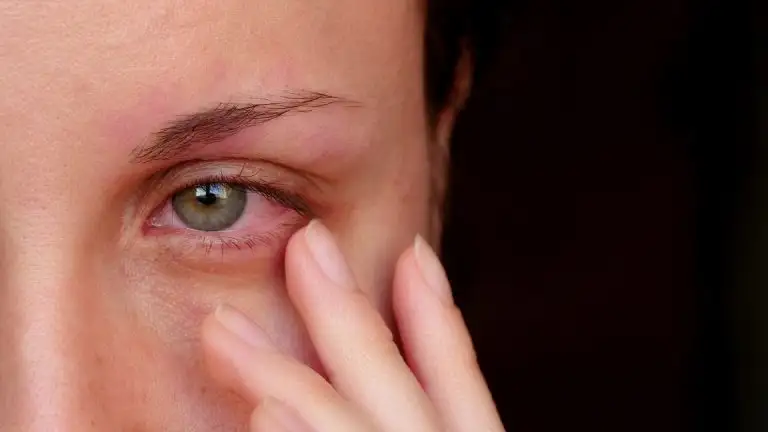
Are you unable to focus on work owing to redness or dry eyes? Cannot perform your daily work with ease due to eye irritation or discharge? Then, you may be suffering from an eye infection, and you can blame it on the monsoon. Yes, that’s right! Monsoon is no doubt pleasing, but it also brings along a plethora of health problems. During the rainy season, you might be susceptible to eye infections as the moisture content in the air creates a favorable condition for bacteria, viruses, and other germs to grow and multiply. Eye infections are quite common during this time of the year. People can present with red eye, eye discharge, watering, light sensitivity, etc. The cause can be viral, bacterial infections, or allergies. The treatment for these need proper diagnosis and tailored treatment but there are some common things that one can do by the time one gets to see an eye specialist said, Dr. Sandeep Kataria, Consultant Ophthalmologist at Wockhardt Hospitals. Eye Care Tips For Rainy Season
A 72-year-Old Obese Woman Successfully Treated for Breast Cancer
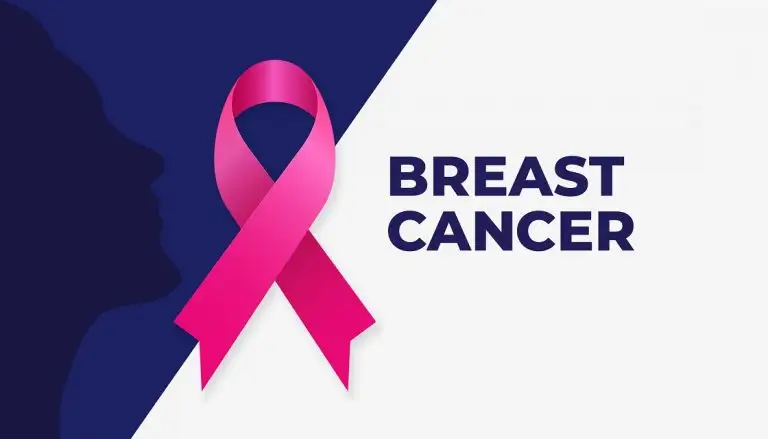
A 72-year-old female with a frozen shoulder and weighing around 115kg was detected with stage II breast cancer. The lump was found on the right breast where she had frozen shoulder. According to a recent report published by National Cancer Registry Programme (NCRP), the number of cancer cases is likely to increase from13.9 lakh in 2020 to 15.7 lakh by 2025, an increase of nearly 20%. However, the one good thing is that at least one-third of common cancers are preventable. Dr. Meghal Sanghavi, Consultant Onco Surgeon at Wockhardt Hospitals, Mumbai Central said, “This case was extremely crucial and severe as the woman was obese and had frozen shoulder on the same side of the lump. But since the cancer was at the II stage the operation was planned immediately to avoid further complications. The radiation was completely averted and only hormone therapy was given to the patient. Ira Rodrigues (the patient 72 years old) said, “I was shocked when I was detected with breast cancer. The other worry was my frozen shoulder which I was suffering from. I was lucky to be diagnosed at an early stage. The doctor’s confidence brought down all my fears. Instead of chemotherapy or radiation, I have been put on hormone therapy which is an oral tablet. I urge people to do a self-examination of the breast and if a lump is found one must visit the oncologist on an urgent basis. Early detection helps in improving chances of successful treatment outcomes.” The factors that increase the risk of breast cancer are lack of exercise, alcohol, weight gain, hormone replacement therapy, family history of breast or ovarian cancer. Early menarche and late menopause are also risk factors for breast cancer. Pregnancy and breastfeeding can reduce the risk of breast cancer. Source: https://www.konexionetwork.com/NewsDetails.aspx?newsid=5fbccc5b-e848-4839-a2e2-7d0b7250cc3b
Worried About your Elders’ High BP Issues

High blood pressure is a major risk factor for heart diseases and stroke, especially in the elderly. Here’s everything you must be aware of. If something as easy as climbing the stairs or carrying a bag of groceries makes the elderly in your house tire out, remember that it’s a reality for many people who have been diagnosed with heart-related ailments like high blood pressure (BP). The major issue associated with high or low BP is it can go undetected for years. In fact, one in eight people is said to suffer from high blood pressure in India, as per the National Health Survey, 2017. And now high BP is one of the leading causes of premature deaths and is directly responsible for about 50% of strokes and 25% of coronary heart diseases deaths in India. When it comes to high blood pressure in the elderly, there are numerous questions that are still floating in our minds. This is why we got in touch with Dr. Anup Taksande, Consultant Interventional Cardiologist, Wockhardt Hospitals, Mira Road, to answer them all for you! Why is High Blood Pressure Called a ‘Silent Killer’ for Elderly Patients? Early detection of high blood pressure is the need of the hour. Often referred to as the “silent killer”, high blood pressure may show no symptoms initially. But it can put senior citizens at an increased risk for heart disease, heart failure, and stroke. What are the Symptoms of High Blood Pressure in Elderly People? Having severe headaches, bleeding nose, chest pain, vision problems, breathing issues, irregular heartbeat, blood in the urine, tiredness, and confusion can be the symptoms of high blood pressure that will require immediate attention. Enumerate the Major Health Risks That Can Get Triggered Due to High Blood Pressure? High blood pressure can lead to a heart attack. Yes, you have heard us here! Having hypertension will damage one’s arteries that get blocked and prevent blood flow to the heart muscle. You will be shocked to know that even stroke occurs as hypertension can cause blood vessels in the brain to clog more easily or burst as well. What Should Be the Normal Range of Blood Pressure That Needs to Be Maintained in Elderly Patients? The normal blood pressure range for senior citizens (and everyone else) is less than 120/80. Blood pressure is generally considered too low if it falls below 90/60. You will have to monitor your blood pressure on a regular basis. What Are the Major Reasons That Cause High Blood Pressure in Elderly People? Not being physically active, age, family history, having too much salt in the diet, using tobacco, and being overweight can invite high blood pressure in the elderly. What Are the Reasons for Low Blood Pressure in Old People? Low blood pressure may occur owing to dehydration, medication, and aging. You will have to take the help of the doctor to bring your low blood pressure to the normal range. Avoid ignoring your health problems. Suggest Important Tips to Keep the Blood Pressure in Control at Home? Try to cut down those excess kilos if you are overweight or obese. Stay physically fit and exercise at home. Eat potassium-rich foods and limit your sodium intake. Say NO to junk and processed foods, quit smoking and alcohol, reduce stress by doing yoga or meditation, and cut down on sugar and refined carbohydrates. What Should You Strictly Avoid Eating If the Patient Is Suffering from High Blood Pressure? A: Avoid salt, packaged foods, pizza, pasta, bakery products, canned products, pickles, products containing tomatoes, alcohol, maida, noodles, burgers, chocolate, papad, chana dal, chips, and cheese. What Do Elderly People Do to Tackle Low Blood Pressure at Home? Monitor blood pressure at home with the help of the doctor. Avoid skipping medication and drink more water. Try to include salt in the diet as suggested by the doctor. Eat small meals and exercise daily. How Can Blood Pressure Affect the Kidneys and the Need for Proper Medication? High blood pressure, or also known as hypertension, is one of the potential causes of kidney disease. Many people with high blood pressure require medicine to bring down the numbers and halt the progression of kidney disease. When Should Patients Consult the Doctor and an Approximate Figure (Statistics) of Elderly People Suffering from High Blood Pressure? Don’t delay and immediately consult the doctor, if the blood pressure is much higher than normal (such as 180/120 or higher). You may also exhibit symptoms like severe headaches and blurry vision. Takeaway High blood pressure is a common occurrence in the elderly. It can increase morbidity and mortality in patients. It is essential to keep a tab on your high blood pressure and stay hale and hearty throughout life. Source: https://www.healthshots.com/preventive-care/family-care/reasons-that-cause-high-blood-pressure-in-older-people/
Color Your Plate Healthy
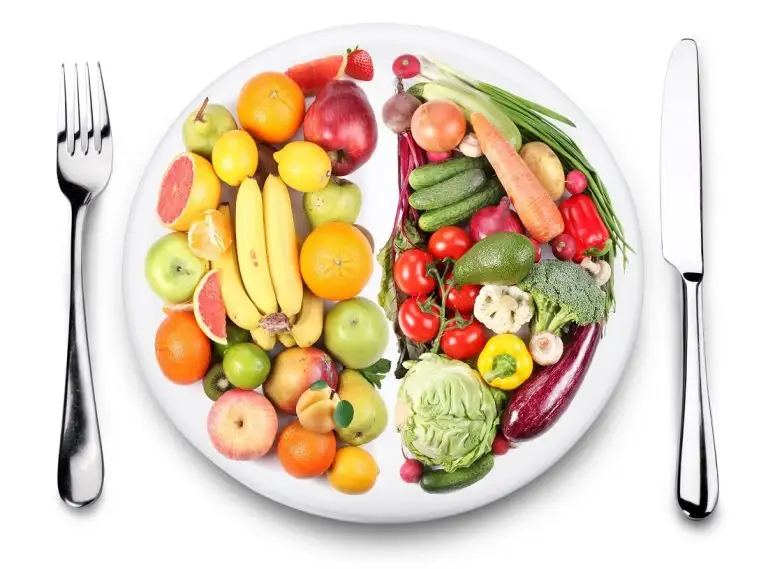
Our busy lives often mean that we don’t eat as well as we’d like to. Ninety percent of Indian adults don’t eat as many vegetables and fruits each day as they should. On the occasion of National Nutrition Week, Mrs. Swati Awasthi, Chief Dietician, Wockhardt Hospitals in Nagpur talks about the importance of including various colors on your meal plate. One way to ensure that you are getting enough vegetables and that you are getting the full range of nutrition is to aim for more colors on your plate. Looking at your plate to ensure it’s full of colors is an easy shortcut that lets you see that you are getting a wide range of vitamins, minerals, and healthy antioxidants. Nature hands us a wide spectrum of rich and varied colors on our plates. Fruits and vegetables get their color from natural pigments which are good for us. Colorful foods contain many vitamins and antioxidants we need- with a few calories. The nutrients in vegetables & fruits work together to protect against cancer, heart disease, vision loss, hypertension, and other diseases in addition to helping us maintain good health. THE VIBRANT REDS Found in Red fruits and vegetables- Tomatoes, beetroots, strawberries, cherries, apple, red cabbage, pomegranates, red grapes, etc What they offer- Lycopene and anthocyanin, which give them their color and nutrition boost. Helps to reduce the risk of developing atherosclerosis, hypertension, and high cholesterol. As these are high in the antioxidants lycopene & anthocyanin they are good for the heart. APPETISING AND MESMERIZING YELLOW/ORANGE Found in Carrots, pumpkin, sweet corn, sweet potato, yellow pepper, yellow tomatoes, oranges, papaya, peaches, mangoes, pineapples, etc What they offer- Alpha and beta carotene, which are turned into vitamin A in the body, give bright orange and yellow meals their color. Vitamin A protects your nervous system and promotes eye health. They also play an important role in maintaining skin health. GO NATURAL, GO GREEN Found in Broccoli, spinach, cabbage, lettuce, green beans, cucumbers, peas, green pepper, green apples, kiwi, green grapes, lime, avocado, etc What they offer- green plants are full of chlorophyll, an antioxidant with a host of different health benefits. The main effect is clearing toxins from the body, which means lowering the risk of cancer, supporting digestive enzymes and absorption of nutrients, boosting the immune system, increasing energy, and faster tissue healing. Green vegetables are high in vitamins C, K, and E, which boost the immune system, promote healthy eyes and bones, and lower the risk of chronic diseases. THE CALMING BLUES/PURPLE Found in Eggplant, blueberries, grapes, blackberries, plum, purple cabbage, etc What they offer-The deep colors of these fruits and vegetables are brought to you by pigments called anthocyanins and are useful in promoting brain function especially boosting memory and help reducing inflammation in the body. Compounds in blue foods like blueberries work as anti-inflammatories, lowering the risk of disease in the esophagus and colon. Chronic ailments like obesity, diabetes, and hypertension can be at least controlled properly with subtle lifestyle changes along with proper nutrition and exercise routines. Eating a wide variety of colorful foods with every meal is vital for boosting maximum nutrition and indicates an abundance of natural vitamins and minerals. Starting to eat right is a way to a healthy and fit life. Source: https://thelivenagpur.com/2021/09/06/colours-on-our-plate/
5 Minutes Morning Rituals to Beat the Blues & Boost Productivity

If morning is the time when you feel dull and inactive, even tiny changes in your routine can go a long way in boosting your energy levels, concentration, and productivity. Considered the most productive time of the day, starting your day early could help you achieve more and improve your overall health. But it may happen due to pandemic time or otherwise, that staying awake till late in the night or glued to our screens could make us dull and unproductive in the morning. Experts suggest that certain morning rituals should be followed to kickstart your day in a better, efficient, and more refreshing way. Not only hitting the bed late after considerable screen time plays havoc with our sleep cycle, it also affects productivity in the first half of the next day. Moreover, many of us make the mistake of picking up our phones first thing in the morning to check messages or breaking news. “The first and the best thing you can do to make your mornings better is not to look at your phone right after waking up,” says Dr. Sonal Anand, Psychiatrist, Wockhardt Hospitals, Mumbai. Dr. Anand Also Suggests Quick Techniques to Get the Brain in Action: Practice mindfulness: Take out a few minutes for yourself and pay attention to what’s going around you. Look out of your window or balcony and observe. Mindfulness can give a boost to your brain and improves your concentration. Be grateful: Your mornings should begin with a little bit of Me time. Focus on yourself and feel happy about yourself, the good things in your life. Be thankful to people in your life and the fact that you have another day to yourself and a beautiful morning. Quick yoga and breathing exercises: Even if you have 5-10 minutes before you start with work, you could take out some time for quick breathing exercises like Anulom Vilom or some asanas. Yoga could help release happy hormones like dopamine, oxytocin, serotonin, and endorphins and that could set the tone of your day. A short burst of activity: If you don’t feel like doing any of the above, you could engage in some form of physical activity like arranging your cupboard, climbing stairs, walking within your room. Research has proved that even short bouts of activities could have multiple health benefits. It can increase your BMR (basal metabolic rate) and can have positive impact on your heart rate. In short, if you want your morning to be brighter, you must prepare the night before by enjoying a good night’s sleep and refraining from excess screen time. Staying physically active throughout the day, even for short durations, can bring long-term benefits. Source: https://www.hindustantimes.com/lifestyle/health/5minute-morning-rituals-to-beat-the-blues-and-boost-productivity-101630829524372.html
Coping with Irritable Bowel Syndrome
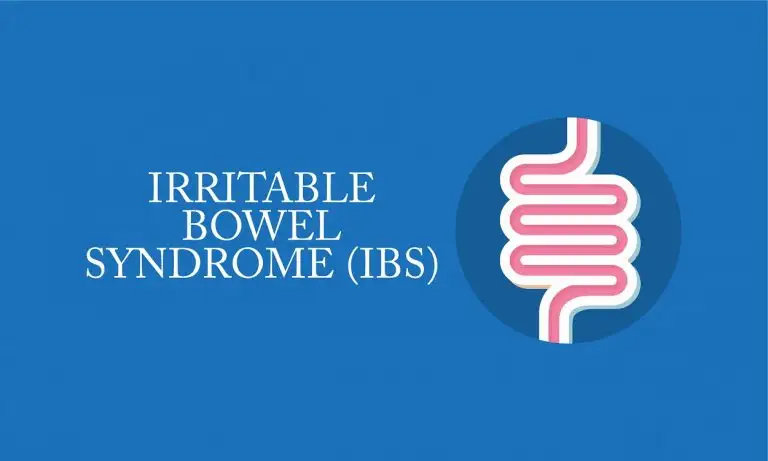
Cramps, bloating, puffiness in your belly area, constipation, and diarrhea – stomach problems are never fun. While a simple upset stomach won’t last forever, a condition called irritable bowel syndrome (IBS) can be ongoing. Knowing which one is cramping your style and killing your vibe is important. What is Irritable Bowel Syndrome? “Irritable Bowel Syndrome is a disease with a collection of symptoms like abdominal pain, abdominal cramps, bloating, diarrhea and constipation. It significantly reduces a patient’s quality of life. It is very common and is not life-threatening. There is no anatomical or structural problem in the gut in people suffering from IBS. It is a lifelong syndrome, a patient typically will have symptoms that will come and go and are exacerbated by stress, emotional changes, or certain food items,” says Dr.Ruchit B.Patel, consultant Gastroenterologist, Wockhardt Hospital, Mumbai Central. Symptoms of Irritable Bowel Syndrome The main symptoms of IBS are belly pain along with a change in bowel habits. This can include constipation, diarrhea, or both. You may get cramps in your belly or feel like your bowel movement isn’t finished. Many people who have it feel gassy and notice that their abdomen is bloated. Persistent pain and frequent trips to the bathroom can make everyday life harder. “Bleeding in the rectum, night diarrhea, unexplainable weight loss, anemia, unusual vomiting, difficulty swallowing, pain in the stomach area that is not linked to gas or bowel movement are symptoms that warrant a doctor’s visit,” says Dr. Veerendra Sandur, Lead Consultant – Medical Gastroenterology, Aster RV Hospital, JP Nagar, Bengaluru. While there is no single cause for IBS, “There is no definite cause. It may be due to altered movement of the small and large intestine, hypersensitivity of the intestine, psychological factors like stress, coping with stress, depression, anxiety. Particularly childhood stress may be a more important cause. Intolerance to some type of food can also trigger IBS,” says Dr. Jayaraj SP, Consultant – Medical Gastroenterologist, Columbia Asia Hospital Sarjapur Road, Bengaluru (A unit of Manipal Hospitals). Dr. Purshottam Vashistha believes muscles contractions in the intestinal walls help to move food through the digestive tract and weaker contractions can lead to indigestion and dryer defecation causing IBS. Bacterial overgrowth or changes in the gut flora can also cause IBS. It’s also more likely to affect people who have a family history of IBS. Symptoms usually start before you’re 35 years old. It’s uncommon for people over 50 to get IBS for the first time. “In India, IBS is more common among women. Estrogen therapy before or after menopause also is a risk factor for IBS. Also, a family history of IBS may increase the chances. Genes may play a role, as may share factors in a family’s environment or a combination of genes and environment,” shares Dr. Waseem Ahmed. The treatment plan will depend on specific symptoms and triggers, but many people start with diet changes. It may help to eat smaller meals and foods that are lower in fat. Dr. Ahmed adds, “Many patients improve with proper counseling, motivation, and behavioral therapy which play a major role in treating functional bowel disorders because mental health is directly intertwined with the performance of the gastrointestinal system.” Treatment of Irritable Bowel Syndrome 1. Elimination of dietary fermentable oligosaccharides, disaccharides, monosaccharides, and polyols (FODMAPs) is considered to be helpful in IBS. The first stage is the substitution of foods with low FODMAP choices. “Low FODMAP foods include lettuces, carrots, chives, cucumber among others. The second stage is a gradual reintroduction of foods into the diet while assessing symptoms, and the third stage is the personalization of the diet to avoid foods that trigger symptoms,” says Dr. Lovekesh Anand. 2. “Include adopting healthy eating patterns, such as regular small volume meals and adequate fiber intake,” says Dr. Nripen Saikia. 3. “Limit alcohol and caffeine intake and reduce consumption of fatty and spicy foods. Avoiding milk in case of known lactose intolerance,” adds Dr. Saikia. 4. Physical activity can help with digestion, reduce stress, and improve your mood. Go for low-impact activities at first that won’t jar the digestive tract 5. “Foods that have been cooked and left out to cool – for example, cold potato/pasta salads, and ready to eat meals should be avoided,” adds Dr. Anand Source: https://www.hindustantimes.com/lifestyle/health/coping-with-irritable-bowl-syndrome-101630690521280.html
24-year-Old Woman with Tongue Cancer Sings Again after Treatment

The patient who was unable to talk, eat or swallow due to a 4.5 cm ulcer located on the right lateral border of the tongue can even sing her favorite songs with ease now. In such cases, patients often lose their tongue, if not treated at the right time. The patient, an event manager and resident of Mira Road, had an ulcer, mouth pain, inability to talk, eat or swallow for over 4 months during the lockdown. The patient visited various big hospitals and tried many home remedies like applying honey on the ulcer, having aloe vera juice but nothing seemed to provide her relief. As time passed, the issue accelerated further, which disrupted her daily routine. However, the patient was referred to Wockhardt Hospitals, Mira Road wherein she got a new way of life. “On arrival, the patient came with complaints like mouth pain, inability to eat, talk or swallow, and a 4.5 cm ulcer located on the right lateral border of the tongue. Her biopsy of ulcer, MRI, X-ray, and CT scan investigations revealed cancerous growth was on the tongue which extended to the lymph nodes of the right side of the neck. The ulcer infiltrative lesion arising from ventral surface of the tongue to the entire floor of the mouth, involving almost the entire anterolateral two-thirds tongue and not abutting the mandible in the entire length,’ said Dr. Singh. Tongue cancer can be termed as a type of mouth or oral cancer, seen in the cells of the tongue leading to tumours or lesions. It occurs due to tobacco consumption and smoking, alcohol, sharp teeth causing ulcers, an iron deficiency anaemia and other nutritional deficiencies. Moreover, it can spread to the lymph glands of the neck. In order to halt the spread of cancer, the patient was scheduled to undergo Hemiglossectomy with FRAFF, followed by 35 cycles of radiotherapy and 6 cycles of chemotherapy. The surgery involved the removal of half of the right side of the tongue and adjacent tissues and reconstructive surgery was carried out to restore speech, swallowing and normal appearance. A skin grafting is done to replace the tissue removed during surgery. “While working from home, I noticed an ulcer that prevented me from eating spicy foods and had to eat bland food. I was petrified when there was mouth pain, slurred speech, and inability to swallow and eat. My voice changed, and people would not understand what I wanted to say. While attending online meetings I would remain silent as I would think that I may become a butt of a joke. Even my family members couldn’t understand what I wanted to convey. I love singing and couldn’t sing my favourite songs due to the ulcer and pain,” the patient said. “My world came crashing down after the diagnosis of tongue cancer as it was an unknown entity for me. I thought I would end up losing my entire tongue, and never be able to speak again. I cried and spent some sleepless nights thinking of that. Now, I am alright, able to eat solid foods comfortably and my speech quality has also improved. I have started singing my favourite songs again,” she added. Source: https://www.deccanherald.com/national/west/24-year-old-woman-with-tongue-cancer-sings-again-after-treatment-1026553.html













